
* In the 1990s, interest in Moon exploration revived, though activities were low-key compared to the frantic efforts of the 1960s and early 1970s. Now new spacecraft are being sent to improve our knowledge of this nearby world.
* The first spacecraft sent to the Moon following the long pause after the launch of Luna 24 in 1975 was the US "Clementine" lunar polar orbiter, sent to the Moon in 1994, after almost two decades of indifference. Clementine was actually a NASA / Department of Defense collaboration. The US military had been working on a ballistic-missile defense technology development program known as the "Strategic Defense Initiative (SDI)" during much of the 1980s, and in 1990 NASA suggested building and launching a low-cost lunar probe as a means to testing SDI sensor technologies.
The military found the idea attractive, since such a mission would be a very thorough test exercise, and would be cheaper than launching a sensor spacecraft and then shooting target spacecraft towards it. The program was formally initiated in 1992, with the US Naval Research Laboratory performing development of the probe with NASA support and backing.
Total mission cost was fixed at $150 million USD, and the development took only two years. The launch mass of the probe was 1,690 kilograms, though most of that was the solid-rocket stage needed for lunar orbit insertion. The fully fueled mass of the probe itself was 458 kilograms, about half of that mass being fuel. The probe was three-axis stabilized, and powered by a solar array with battery backup. Spacecraft systems were controlled by two processors, and the probe carried a 2-gigabit solid state data recorder.
Clementine's instrument payload was developed by the US Lawrence Livermore National Laboratory, and included:
The probe's cameras were able to provide complete coverage of the Moon in 11 narrow-wavelength bands, from the near infrared through the visible and into the ultraviolet regions of the spectrum. The bands were selected to provide information on the composition of the Moon's surface. Common minerals found on the Moon can be identified by their "color" in the visible and infrared parts of the spectrum. In particular, the major silicate minerals are recognized from their absorption of particular near-infrared wavelengths reflected from sunlight.
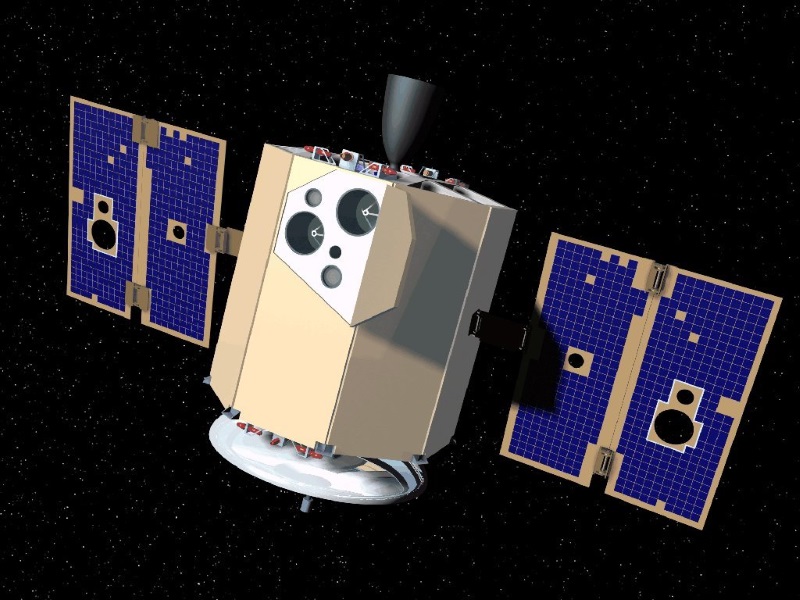
The probe was launched on a surplus Titan IIG ballistic missile on 25 January 1994, and entered lunar orbit on 19 February. The spacecraft's lowest approach to the lunar surface during its orbit was 425 kilometers. That gave a best resolution of about 100 meters per pixel in the visible and ultraviolet ranges, and about 150 meters in the near-infrared range. The LIDAR camera / ranging system could obtain images with a resolution of about 10 meters per pixel, and altitude measurements with a precision of plus or minus 40 meters. The probe left lunar orbit on 7 May 1994 for a planned flyby of the asteroid 1620 Geographos on 31 August 1994 -- but a software glitch caused an attitude-control thruster to be jammed ON, and the probe went into an unrecoverable tumble.
* Despite the unfortunate end of Clementine, the probe did return excellent data during its lunar observations. NASA followed up by the mission with a second lunar polar orbiter, the "Lunar Prospector", one of the agency's "Discovery" series of low-cost, fast-track science spacecraft. Project costs, including launch, were only $63 million USD, and development took only 22 months.
Lunar Prospector was essentially a follow-up to lunar mapping surveys performed by the Apollo missions. In the late 1980s, a group of space enthusiasts tried to promote the launch of a privately-funded lunar orbiter that would map the mineral composition of the lunar surface using a spare gamma-ray spectrometer left over from the Apollo missions. One of the more interesting schemes considered was launching such a probe as a "getaway special" payload on board the space shuttle, then boosting the probe on a slow journey to the Moon using a solar-electric engine.
NASA's approval of the mission led to a more conventional approach. The Lunar Prospector is a simple spacecraft, based on the LM-100 satellite bus Lockheed Martin had developed as a common basis for science spacecraft. The probe was a spin-stabilized drum 1.2 meters in diameter and 1.4 meters high, weighing 300 kilograms, with 45% of that mass in the form of fuel. It had no camera or on-board computer, though it had a hardwired digital controller that could interpret 60 control commands. It did not have any on-board processing capability, storing data in a solid-state data recorder for relay back to Earth. The spacecraft carried five instruments, including:
The spacecraft's radio system was also used as an element in a "radio science" experiment, with the Earth receiving station carefully observing changes in the signal frequency to track small shifts in the spacecraft's orbit, allowing the creation of a gravitational map.
The gamma-ray spectrometer was the primary instrument. It could observe gamma rays emitted by the decay of radioactive elements, as well as pick up the gamma-ray signatures of iron, titanium, silicon, oxygen, calcium, and magnesium. These elements do not emit gamma rays naturally, instead producing them in response to excitation by cosmic rays, high-energy particles that originate in deep space.
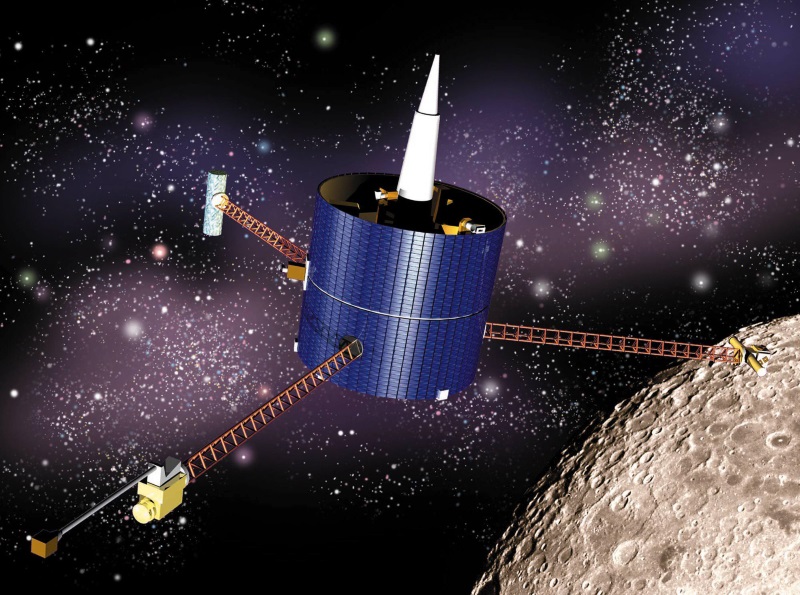
* Lunar Prospector was launched on 7 January 1998 by a Lockheed Martin Athena 2 solid-fuel booster. The probe was put into lunar polar orbit at an altitude of 100 kilometers.
A particular item in the agenda of both Clementine and Lunar Prospector was the search for lunar polar ice deposits. Radar experiments performed by Clementine showed that there were highly reflective patches at the poles, hinting at such deposits.
Lunar Prospector's neutron spectrometer could pick up neutrons kicked up from surface material by cosmic-ray impacts. These neutrons could pass through concentrations of heavy mineral atoms without losing much energy, but they lost energy in collisions with hydrogen atoms that would be found in water and other ices. Lunar Prospector did in fact pick up bursts of such "slow" neutrons over the Moon's poles. The data indicated that there is about twice as much water ice at the north pole of the Moon as the south. The exact quantity of the ice remains somewhat uncertain. Radar observations of the poles performed later by the giant radio telescope at Arecibo in Puerto Rico suggest that the ice may be more in the form of permafrost than a thick sheet under a layer of moondust.
The formal mission lasted a year, and then the probe was lowered to an orbital altitude of 30 kilometers. On 31 July 1999, it was sent into the Moon's surface near the south pole, while Earth-based telescopes observed for any evidence of water thrown up by the crash. No water was observed in the impact debris.
* Moon missions went quiet for a while after that -- until October 2003, when the European Space Agency (ESA) launched a lunar orbiter, the first in the "Small Missions for Advanced Research In Technology (SMART)" series of technology-demonstration spacecraft.
"SMART 1" was mainly intended as a testbed for a solar-electric xenon-ion propulsion system to be used on the ESA "Bepi Colombo" Mercury probe, discussed later, with the engine driven by twin solar panels. However, the probe also carried a 15 kilogram suite of experimental instruments:
The payload also included a communications system to support spacecraft telemetry and command uplink in the X and Ka communications bands. A radio-science experiment was used to help track the performance of the xenon-ion engine, and to perform lunar gravitational mapping observations. SMART 1 was developed by the Swedish Space Corporation, with elements from 30 contractors in eleven European nations and the US.
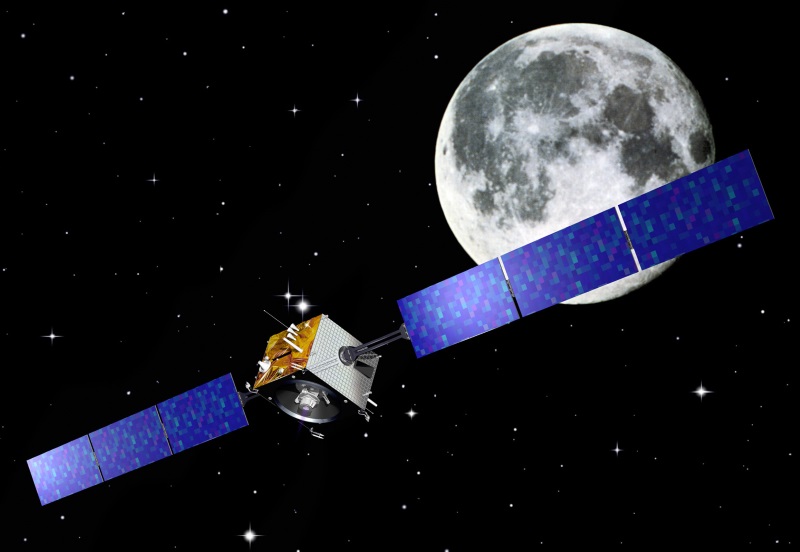
SMART 1 was put into space as a secondary payload on an Ariane 5 booster on 27 September 2003. It had a launch mass of 367 kilograms, including 82 kilograms of xenon fuel, with its twin solar arrays spanning 14 meters. It was placed in a high elliptical orbit, and the probe used its throttleable Hall-effect xenon-ion engine to spiral itself outward until it was captured by the Moon on 15 November 2004, after 332 gradually expanding orbits around the Earth. It then placed itself into a polar orbit that ranged from 3,000 kilometers over the lunar north pole and 300 kilometers over the lunar south pole.
The engine only produced 0.07 N of thrust, equivalent to the weight of a postcard, but it was continuously operational for the better part of the long trip to the Moon. SMART 1 finally ran out of xenon fuel in the summer of 2005. The probe impacted the Moon on 3 September 2006, with the flash of impact observed by an Earth-based telescope.
BACK_TO_TOP* Interest in Moon missions revived significantly in the 21st century. On 14 September 2007, the "Japan Aerospace Exploration Agency (JAXA)" launched the "Selenological & Engineering Explorer (SELENE)" lunar orbiter on an H-2A booster. The probe was named after the Greek lunar goddess; it was renamed "Kaguya", a "Moon Princess" from an old Japanese folktale, once it got through space checkout.
Kaguya had a launch mass of 2,885 kilograms, with the payload including:
The orbiter also carried two small auxiliary satellites, named "Okina" and "Ouna", again after characters from Japanese folklore. Both Okina and Ouna were eight-sided spacecraft with a mass of 50 kilograms, and were intended to support gravitational studies, as well as radio measurements of the Moon's tenuous atmosphere.
Kaguya went into a highly elliptical Moon orbit on 3 October 2007 and was gradually put into a 100-kilometer-high circular polar orbit. The two auxiliary satellites were released during different phases of orbital reduction. The mission was planned to last ten months but it was extended, with the spacecraft finally crashing into the Moon on 10 June 2009, returning striking imagery right up to the time of impact.
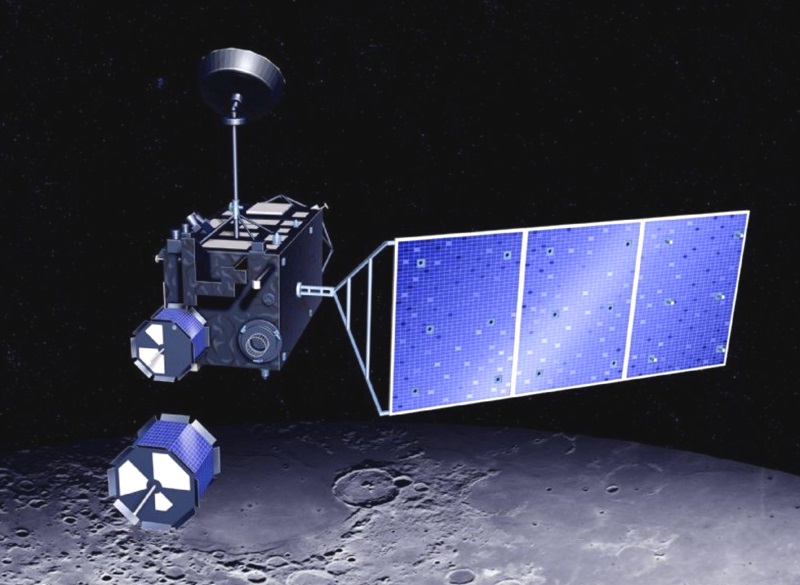
JAXA had planned another Moon mission, "Lunar-A", which was a lunar orbiter that was to drop two dartlike "surface penetrators" into the Moon's surface and then relay data from the penetrators back to Earth. However, the mission ran into technical and financial difficulties, to be finally killed off in 2007.
* The launch of Kaguya was quickly followed by the flight of "Chang'e 1", China's first lunar probe -- in fact, China's first deep-space mission. It was sent into space from the Xichang launch center on 24 October 2007 by a Long March 3A booster, and arrived safely in lunar orbit 12 days later.
Chang'e 1 was based on the DongFangHong 3 (DFH 3) weather satellite and had a launch mass of 2,350 kilograms. The spacecraft carried an instrument suite consisting of:
Chang'e 1 was placed in a 200-kilometer circular polar orbit to perform observations for a year, with the spacecraft obtaining maps and three-dimensional imagery of lunar surface features; analyzing the distribution of 14 elements in the lunar surface; measuring the depth of the lunar soil; and monitoring space weather.
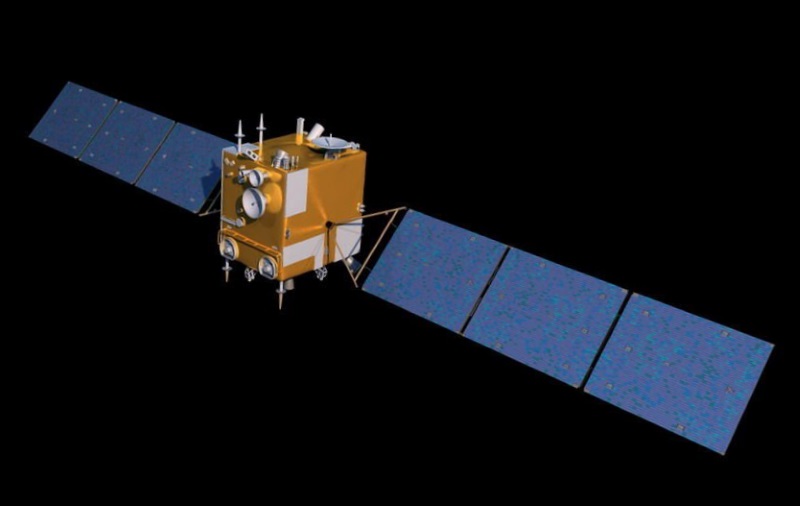
The spacecraft was named after a Chinese lunar deity. The Chinese National Space Agency (CNSA) announced plans for the mission in 2003. The ESA collaborated on the mission, providing tracking and mission support services; the joint effort followed Chinese assistance to the earlier ESA SMART 1 lunar orbiter mission. Chang'e 1 finally impacted on the lunar surface on 1 March 2009.
* India followed China a year later. On 22 October 2008, the Indian Space Research sent the "Chandrayaan 1" lunar orbiter to the Moon on an ISRO Polar Satellite Launch Vehicle (PSLV), launched from Sriharikota Island in the Bay of Bengal. "Chandrayaan" means "Moon Voyager" in Hindi.
The orbiter had a launch mass of 1,380 kilograms. It was designed to provide a 3D atlas of the Moon's surface, as well as a map of the distribution of elements and minerals. It carried a payload of 11 instruments, five built by India and the others provided by foreign research organizations -- three by the ESA, two by NASA, and one by Bulgaria. The instruments included:
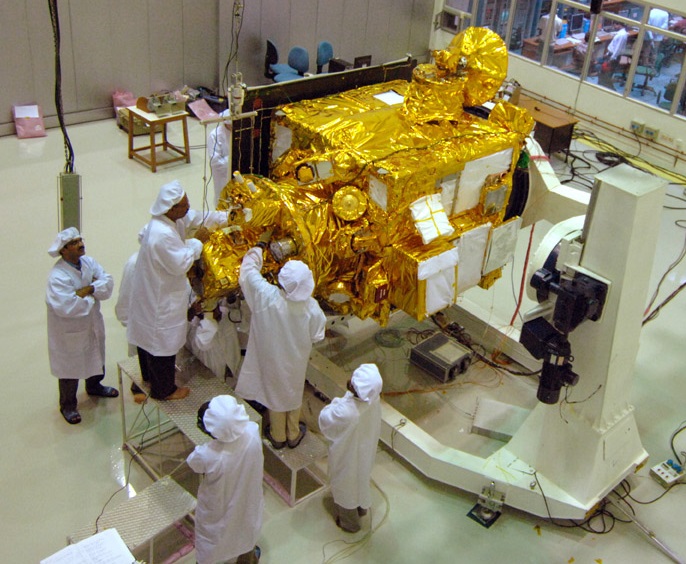
Contact with Chandrayaan 1 was lost in late August 2009, which was a disappointment since the probe hadn't yet completed half of its operational mission. However, considerable data was returned in the time the spacecraft was operational -- the MiniSAR payload discovered over a half-billion tonnes of water ice deposits near the Moon's north pole -- and the mission was not regarded as a failure.
BACK_TO_TOP* NASA was slow to get in on the new Moon boom, but US President George W. Bush, in the course of his re-election campaign in 2003, announced that NASA would pursue a return to crewed Moon landings as a stepping stone to a crewed expedition to Mars under what was named the "Constellation" program. NASA began work on a new mission, a "Lunar Reconnaissance Orbiter (LRO)", to map the Moon in unprecedented detail to lay groundwork for new crewed missions.
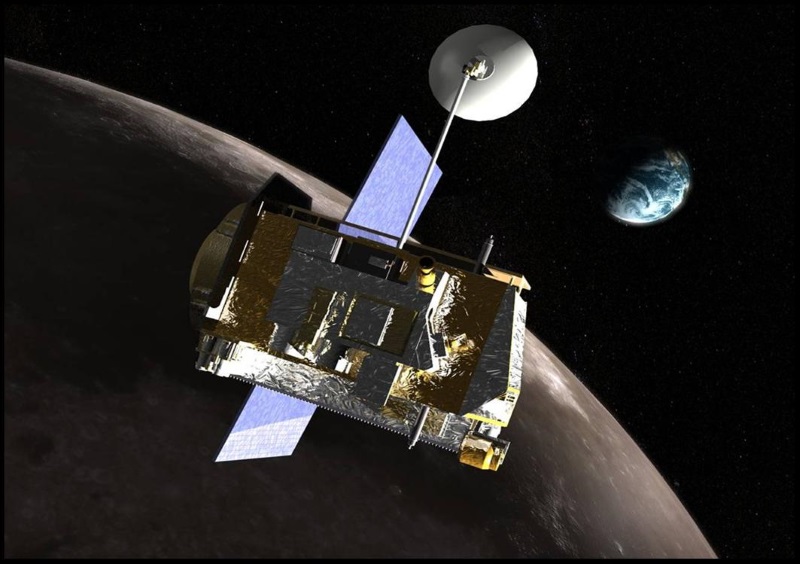
LRO was launched by an Atlas V booster on 18 June 2009, to be placed in a 50 kilometer high polar orbit for one year of observations. LRO had a launch mass of 1,916 kilograms, with a payload consisting of:
The LRO mission was originally to use a medium booster, but NASA decided to use a larger Atlas V -- the 410 model, without any solid rocket boosters -- as insurance against any weight increases in the spacecraft. The bigger booster also permitted addition of a "crash lander" probe named the "Lunar Crater Observation & Sensing Satellite (LCROSS)".
The Centaur upper stage of the launch vehicle was directed to impact on the Moon's south pole on 9 October, with the LCROSS "Shepherding Spacecraft (S-S/C)" trailing behind. The impact of the Centaur upper stage, at a velocity of about 2.5 kilometers per second, released a plume of material and left behind a crater tens of meters across and several meters deep. The 901 kilogram S-S/C performed observations with a camera and spectrometers, relaying data through the LRO, before crashing itself, fifteen minutes after the first impact.
LCROSS carried an instrument payload of four infrared cameras, one visible-light camera, three spectrometers, and a photometer to observe the impact. LRO performed follow-up observations of the crater left by the upper stage. There was some disappointment that the impact of the Centaur stage didn't produce any activity that was visible from Earth even through the biggest telescopes, but NASA mission scientists were still pleased with the "take" from the experiment. At last notice, LRO was still returning science data, though the Mini-RF instrument failed in early 2011.
Unfortunately, the notion that LRO was paving the way for a crewed return to the Moon did not long outlive the launch of the spacecraft. The Constellation program proved, like many NASA crewed space programs, badly underfunded, with no progress made on hardware for a Moon landing. In early 2010, the Obama Administration recognized reality and canceled the Constellation program, with the US crewed space program being rethought. The agency is still committed to robot missions.
* Following the success of the Chang'e 1 mission, on 1 October 2010 China launched the follow-up "Chang'e 2" orbiter from Xichang on a Long March 3C booster. Chang'e 2 actually started life as a backup spare for Chang'e 1 but received a modernized instrument suite, leading to a heavier launch mass of 2,495 kilograms. It observed the Moon until June 2011 and then left orbit to take up position at the Earth-Sun L2 stable libration point, beyond the Moon's orbit, as a test for later Chinese missions to the L2 point.
In April 2012, Chang'e 2 left the L2 point for a flyby of asteroid 4179 Toutatis, which successfully took place on 13 December 2012. A number of images were taken, with closest approach being 3.2 kilometers. The probe was then used as a tracking target; it will return to the vicinity of the Earth in 2029.
BACK_TO_TOP* NASA did launch another lunar mission following LRO / LCROSS, with a Delta 2 being launched from Cape Canaveral on 10 September 2011 to put the dual-spacecraft "Gravity Recovery & Interior Laboratory (GRAIL)" lunar orbiter mission into space. GRAIL was to obtain a high-resolution gravity map of the Moon.
GRAIL was derived from an Earth satellite system, the "Gravity Recovery And Climate Experiment (GRACE)", launched in 2002. GRACE consisted of two satellites, one following the other in the same orbit, connected by a precision microwave link; measurements of the variations in the flight path of the two spacecraft provided data for construction of an extremely precise gravitational map of the Earth, mostly to track the shifting of the Earth's oceans.
Like GRACE, the two GRAIL spacecraft flew in the same orbit in tandem, remaining in contact over a precision microwave measurement link -- the "Lunar Gravity Ranging System (LGRS)", able to measure the distance between each other to about the width of a red blood cell. To obtain reliable measurements meant that the spacecraft had to be tracked closely from Earth, and so both were fitted with a radio beacon to ensure precise tracking. The only secondary payload was a "MoonKAM", a four-camera fixed imager array for outreach to middle school students.
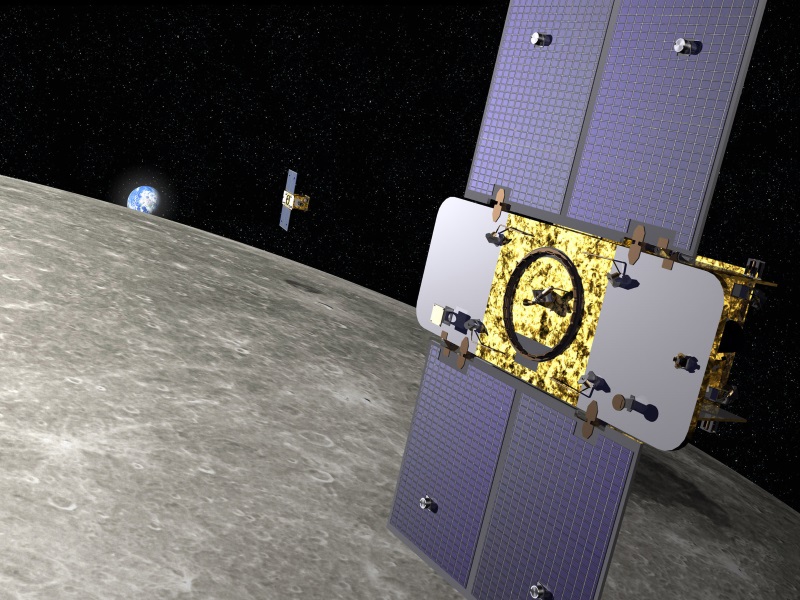
Each GRAIL satellite had a launch mass of 307 kilograms. They had twin solar arrays for power and a hydrazine rocket / thruster maneuvering system; they featured thermal protection systems to prevent solar heating from throwing off their measurements. The two looked identical, but they were "handed", being "mirror images" of each other.
The two GRAIL orbiters were launched on a circuitous flight path that took them around the Earth-Sun Lagrange point, resulting in a trip to the Moon that took about three and a half months. The roundabout trajectory was to get the two spacecraft into lunar orbit with a minimum of fuel, reducing launch mass so a smaller and cheaper booster could be used. The extended trip to the Moon also allowed the spacecraft to shed residual traces of gases that could have affected their measurements. The GRAIL spacecraft were placed in orbit at an altitude of about 50 kilometers, with separation varying from 100 kilometers to 225 kilometers. Wider separation permitted mapping more deeply into the Moon.
Mapping the Moon took about three months; the gravity map was of better resolution than that provided by the GRACE satellites, since the GRAIL spacecraft could orbit the Moon at lower altitudes. The GRAIL spacecraft conducted an extended science mission until 17 December 2012, when they were de-orbited into a ridge near the Moon's north pole.
* NASA's Ames Center in California built on a Moon orbiter, the "Lunar Atmosphere Dust Environment Explorer (LADEE)", to orbit low over the lunar surface to measure trace gases and dust. It was launched by a Minotaur 5 booster from Wallops Island on the Virginia coast on 6 September 2013. The 383-kilogram spacecraft featured a payload of three instruments, including:
LADEE also carried an experimental high-speed laser communications link designed by MIT Lincoln Labs, with a maximum bandwidth of 600 megabits per second. LADEE entered lunar orbit on 6 October; it finally impacted into the Moon's surface on 18 April 2014, after over six months of observations.
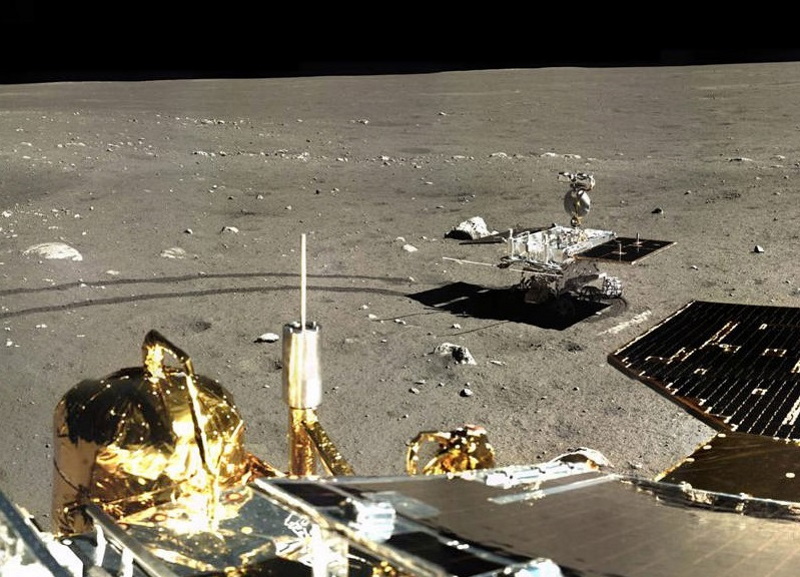
* China launched their third Moon probe, "Chang'e 3", on a Long March 3B booster from Xichang on 1 December 2013. The spacecraft consisted of a soft lander with a mobile rover named "Yutu (Jade Rabbit)", China's first in both cases. The lander set down successfully on the Moon on 14 December 2013.
The six-wheel rover had a mass of 140 kilograms; it was powered by solar panels, but had radioisotope heaters to keep it from freezing up during the lunar night. The Yutu rover carried advanced radars to study the structure of the lunar crust at shallow depths, along with spectrometers for lunar soil analysis. Four navigation and panoramic cameras were mounted on the rover to return high-resolution images from the moon. The lander had an optical telescope for astronomical observations. The rover lost mobility after a month of observations, but continued to return data until the summer of 2016. At last notice, the lander was still transmitting data.
The "Chang'e 4" probe was launched from Xichang on a Long March 3B booster on 7 December 2018. It was very similar to Chang'e 3, featuring a lander and a rover, built with spare hardware from Chang'e 3. It landed in the Von Karman crater in the Moon's South Pole-Aitken basin region. This was the first Moon landing on the lunar farside.
The roughly 1,300-kilogram landing module carried landing and terrain cameras, plus a Chinese-made low-frequency radio spectrometer, and a German-made neutron and dosimetry instrument to measure radiation levels in the lunar environment. The Chang'e 4 rover weighed about 140 kilograms, and carried a ground-penetrating radar to probe into the Moon's surface, plus a visible / near-infrared spectrometer to gather data on soil composition. It also carried a Swedish-made instrument to study the interaction between the solar wind and the lunar environment -- as well as a student experiment, a chamber with potato seeds and silkworm eggs, with students observing their development. There were some differences between Chang'e 3 and Chang'e 4 -- for example, the Chang'e 4 lander did not carry a robotic arm or an alpha particle X-ray spectrometer. Both the rover and lander were still operational as of last notice.
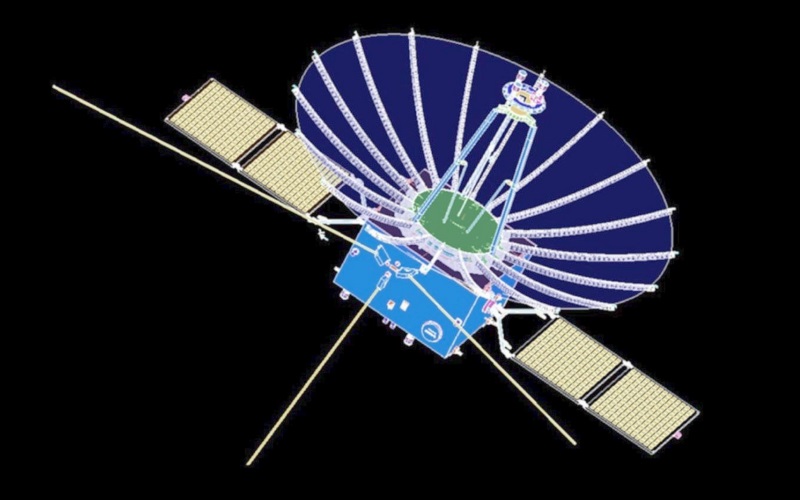
To support the Chang'e 4 mission, a communications relay satellite named "Queqiao" had been launched on 20 May 2018, the satellite being placed in a "halo" orbit around the outer Earth-Moon libration point, to keep the landing system in touch with Earth. Queqiao also carried secondary payloads for radio astronomy experiments.
BACK_TO_TOP